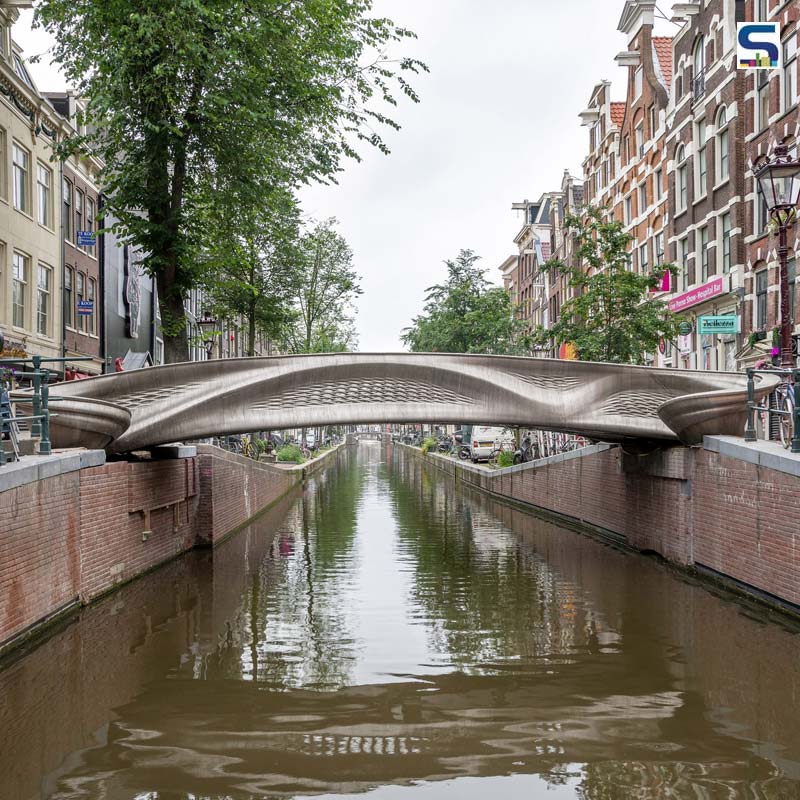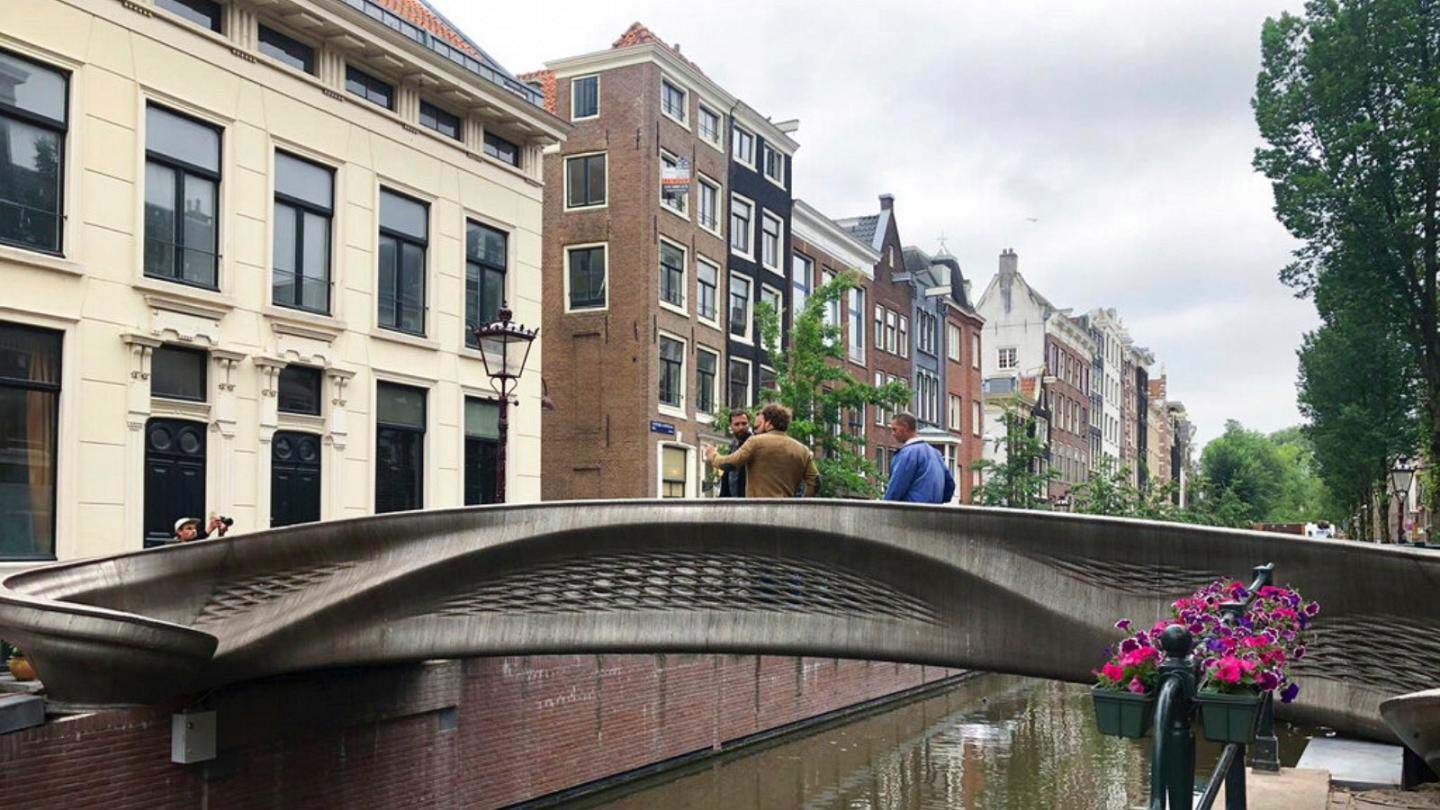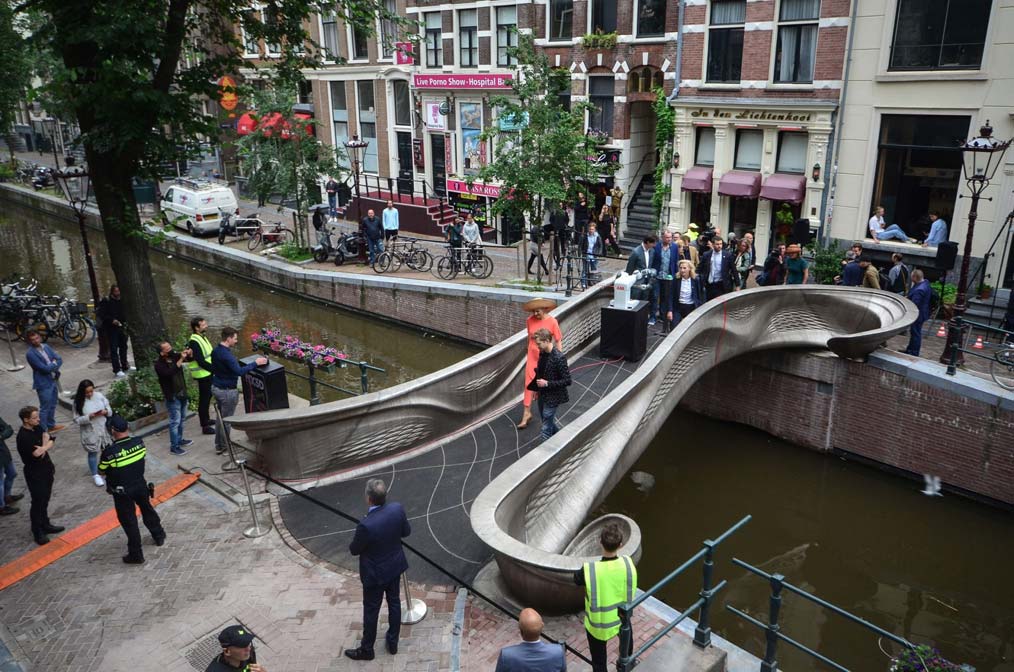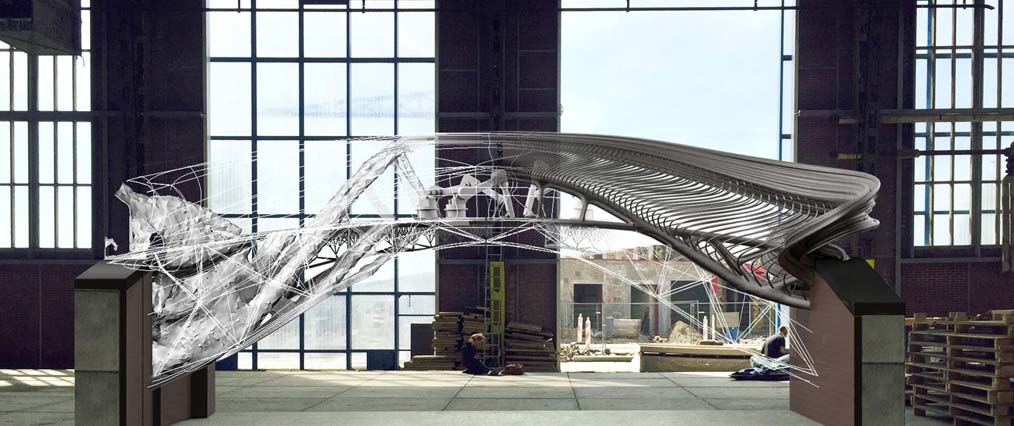
Nearly after six years after the launch of the project, Joris Laarman’s 3D printed bridge has seen the light of the day. Touted to be the world’s first 3D printed stainless steel bridge, the 12m-long pedestrian bridge is built by Laarman’s Dutch robotics company MX3D and engineering firm Arup. Installed over Oudezijds Achterburgwal, Amsterdam, MX3D Bridge was unveiled by Queen Maxima of Netherlands.
 Top: The 12m-long pedestrian bridge is built by Laarman’s Dutch robotics company MX3D and engineering firm Arup; Above: The bridge is fabricated from stainless steel rods by six-axis robotic arms which are equipped with wielding gear.
Top: The 12m-long pedestrian bridge is built by Laarman’s Dutch robotics company MX3D and engineering firm Arup; Above: The bridge is fabricated from stainless steel rods by six-axis robotic arms which are equipped with wielding gear.
Reportedly, the bridge is fabricated from stainless steel rods by six-axis robotic arms which are equipped with wielding gear. Nearly 4,500kg of stainless steel – which was 3D printed by robots in a factory for over six months before craned over the canal – has been used to design its structure. Parametric modeling software is reportedly used for crafting its S-shaped form and balustrades with lattice-style perforations. The structure is reportedly secured with a network of sensors that allows the bridge to collect data. Fitted by the Alan Turning Institute and Arup, the sensors put together a digital twin to keep track of its performance and health by monitoring corrosion, load changes, environmental conditions and pedestrian use.
 Parametric modeling software is reportedly used for crafting its S-shaped form and balustrades with lattice-style perforations.
Parametric modeling software is reportedly used for crafting its S-shaped form and balustrades with lattice-style perforations.
The plan was reportedly to print a structure across the canal in situ with robots working both banks welding the bridge beneath them until they met in the middle. However, the bridge was built in two parts at an off-site facility. Its structure was thereon strengthened following the council regulations keeping in mind to guard the structure against any potential boat collisions.
 The bridge was built in two parts at an off-site facility.
The bridge was built in two parts at an off-site facility.
Going forward, experts reportedly suggest this technique could possibly lead to more sustainable structures. According to MX3D co-founder Gijs van der Velden, reportedly, 3D printing technology not only offers significant weight reduction but also reduces the manufacturing of parts in the tooling, oil and gas, and construction industries.
Image credits: Thijs Wolzak, JL, Adriaan de Groot